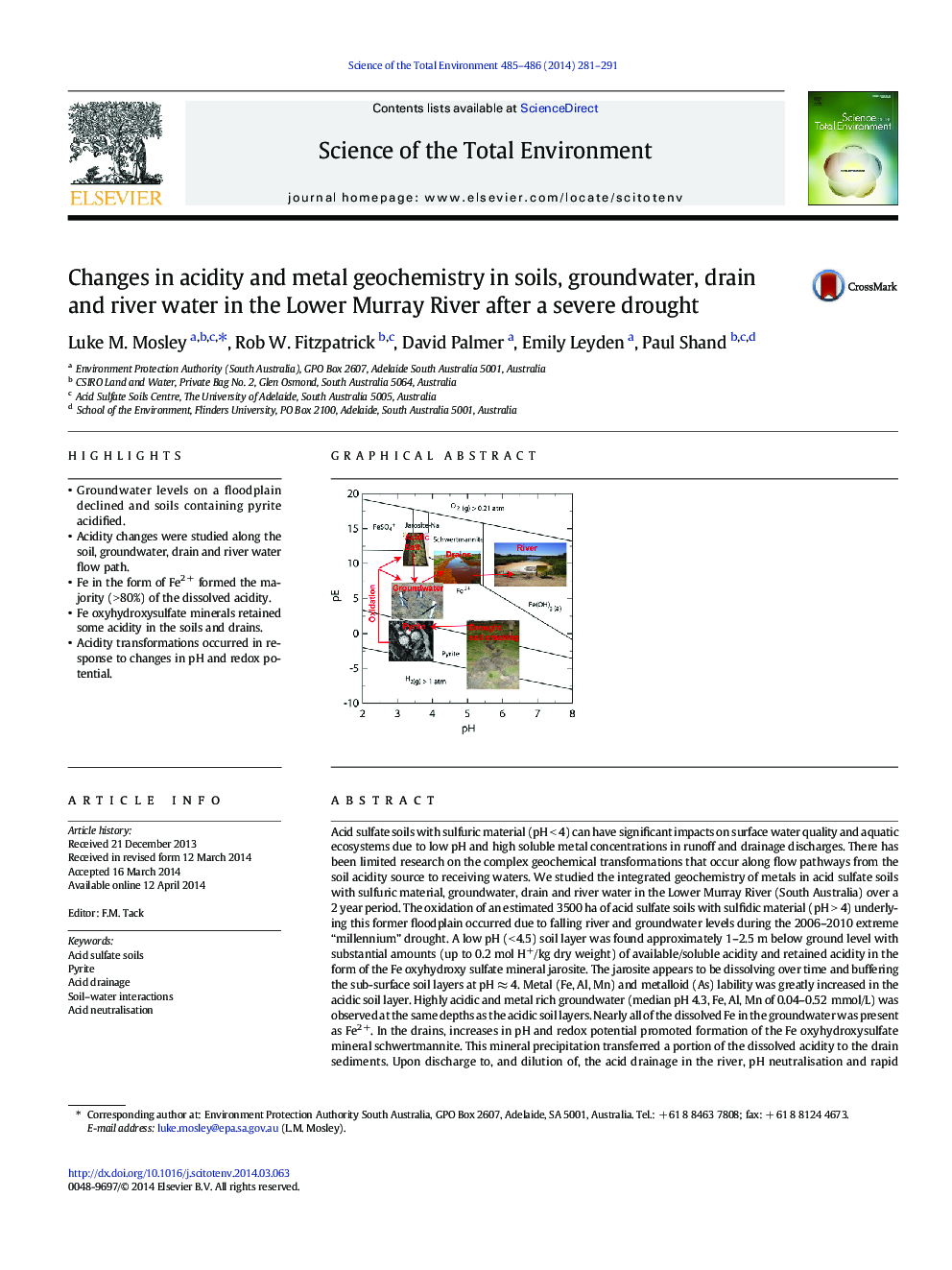| کد مقاله | کد نشریه | سال انتشار | مقاله انگلیسی | نسخه تمام متن |
|---|---|---|---|---|
| 6330377 | 1619783 | 2014 | 11 صفحه PDF | دانلود رایگان |
- Groundwater levels on a floodplain declined and soils containing pyrite acidified.
- Acidity changes were studied along the soil, groundwater, drain and river water flow path.
- Fe in the form of Fe2Â + formed the majority (>Â 80%) of the dissolved acidity.
- Fe oxyhydroxysulfate minerals retained some acidity in the soils and drains.
- Acidity transformations occurred in response to changes in pH and redox potential.
Acid sulfate soils with sulfuric material (pH < 4) can have significant impacts on surface water quality and aquatic ecosystems due to low pH and high soluble metal concentrations in runoff and drainage discharges. There has been limited research on the complex geochemical transformations that occur along flow pathways from the soil acidity source to receiving waters. We studied the integrated geochemistry of metals in acid sulfate soils with sulfuric material, groundwater, drain and river water in the Lower Murray River (South Australia) over a 2 year period. The oxidation of an estimated 3500 ha of acid sulfate soils with sulfidic material (pH > 4) underlying this former floodplain occurred due to falling river and groundwater levels during the 2006-2010 extreme “millennium” drought. A low pH (< 4.5) soil layer was found approximately 1-2.5 m below ground level with substantial amounts (up to 0.2 mol H+/kg dry weight) of available/soluble acidity and retained acidity in the form of the Fe oxyhydroxy sulfate mineral jarosite. The jarosite appears to be dissolving over time and buffering the sub-surface soil layers at pH â 4. Metal (Fe, Al, Mn) and metalloid (As) lability was greatly increased in the acidic soil layer. Highly acidic and metal rich groundwater (median pH 4.3, Fe, Al, Mn of 0.04-0.52 mmol/L) was observed at the same depths as the acidic soil layers. Nearly all of the dissolved Fe in the groundwater was present as Fe2 +. In the drains, increases in pH and redox potential promoted formation of the Fe oxyhydroxysulfate mineral schwertmannite. This mineral precipitation transferred a portion of the dissolved acidity to the drain sediments. Upon discharge to, and dilution of, the acid drainage in the river, pH neutralisation and rapid oxidation, hydrolysis, and precipitation of solid Al and Fe phases occurred in a localised area. Acidity is persisting (> 3 years) following a return to pre-drought water levels.
203
Journal: Science of The Total Environment - Volumes 485â486, 1 July 2014, Pages 281-291
